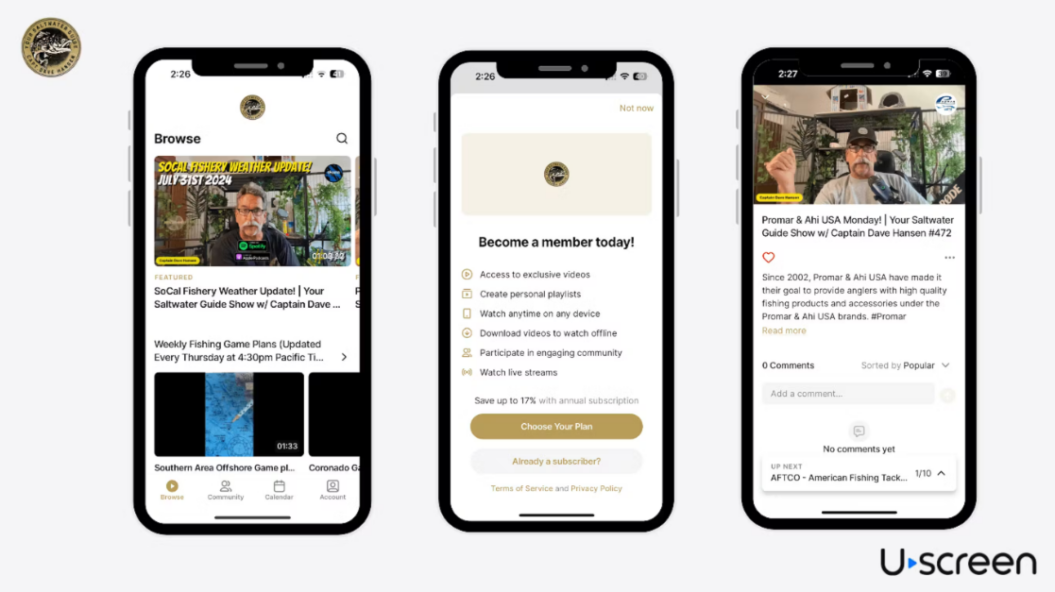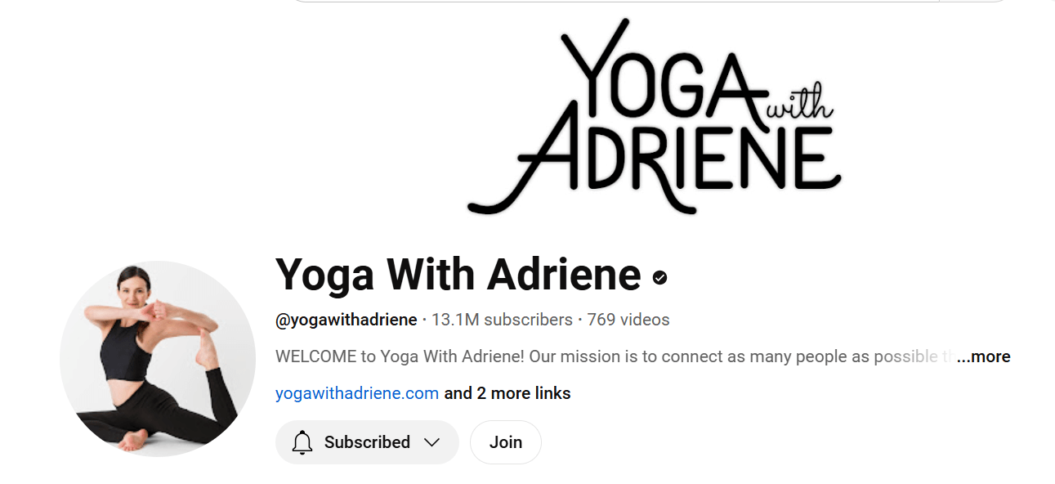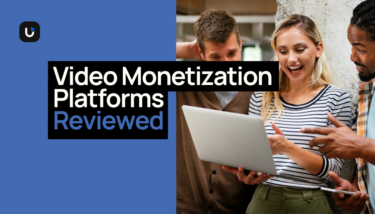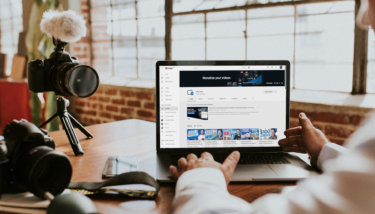Few words strike fear into the hearts of YouTubers faster than “demonetization.”
Having a video – or worse, your entire channel – cut off from ad revenue can be devastating for creators. The entire experience is stressful, confusing, and demoralizing. And if you haven’t yet had a video demonetized, the fear of it is real. No one wants their revenue streams to dry up.
So what can you do to prevent or reverse YouTube demonetization?
We’ll start by getting very clear on how demonetization works and why it happens, then jump into how to get your videos remonetized, and finally discuss how to protect your revenue from demonetization altogether.
What is YouTube demonetization?
YouTube demonetization happens when a video or a channel violates YouTube’s rules, resulting in that video or channel not earning any ad revenue.
(This can also happen if you’ve monetized your YouTube Shorts videos, and the process is largely the same.)
But, as we’ll see, your video or channel may get demonetized even if you don’t violate those rules.
Here are a few things that can happen if YouTube decides to demonetize your content, according to YouTube’s demonetization policies:
- Your payments may be withheld, adjusted, charged back, or offset.
- Your videos’ ad revenue may be limited or paused.
- Your participation in the YouTube Partner Program may be suspended.
- Your channel can be suspended or terminated.
If YouTube takes any of these steps, you’ll get an email or a notification giving you the details of your demonetization.
Why does YouTube demonetize videos?
In short, YouTube demonetizes videos to appease their own most valuable audience: advertisers. Companies don’t want their ads associated with types of content they’ve deemed undesirable.
Some creators would argue that YouTube has been prioritizing advertisers over the creators who drive views to those advertisers – The Verge’s article “The golden age of YouTube is over” has some great examples.
Some types of demonetizable content are obvious, like hate speech or depictions of violence. But others aren’t quite as intuitive. Here are a few things that can get you demonetized:
- Repetitious or reused content
- “Inappropriate” language
- Violence
- Adult content
- Shocking content
- Harmful acts
- Unreliable content
- Hateful & derogatory content
- Controversial issues
- Sensitive events
- Inappropriate content for kids and families
The list goes on. There’s no definitive guide, but YouTube’s advertiser-friendly guidelines are a good place to start if you want to do some research.
You might think you’re safe because your content strategy doesn’t include videos in these categories. For the most part, you’re right. However, “Demonetization can happen to anyone if they’re not careful,” says Kylie Julien, Uscreen’s Senior Video Production Specialist:
I’ve seen it happen to history channels and farm lifestyle channels for showing content that has educational value for their target audience, but YouTube deems it not appropriate for the platform.
Kylie Julien, Senior Video Production Specialist at Uscreen
Less common causes of YouTube demonetization
There are also some other cases in which you’ll get hit with demonetization. For example, one creator decided to curate the content he’d posted on his channel, resulting in his watch hours dropping below the required 4,000 in 12 consecutive months (you can read more about the requirements to join the YouTube Partner Program in our guide to YouTube monetization).
Other creators have found that small errors in their AdSense accounts have resulted in demonetization. Some have gotten penalties with confusing messages about monetizing content intended for kids. And Business Insider published a report showing that many YouTubers get demonetized by mistake.
YouTube’s demonetization process relies partly on automated tagging, which means errors in its algorithmic reviews can result in unearned demonetization. YouTube is currently experimenting with a hybrid approach that uses human reviewers earlier in the process, but the reliance on algorithms still means mistakes are made.
The reasons aren’t always clear
In some cases, creators just don’t know why they’ve been demonetized. “My entire channel was demonetised in December 2024 for ten days for no adequately explained reason,” says Jill Bearup, a YouTuber with over 500,000 followers.
Bearup hadn’t violated any of YouTube’s guidelines, and none of her videos were flagged.
“My AdSense account just stopped working, and none of my videos ran any kind of ad for 10 days.”
As you can imagine, this was rather confusing and alarming. While her channel was eventually remonetized, Bearup had to go through an extended process to figure out what was going on and get the penalty overturned (we’ll talk about that shortly).
In short, there’s a huge number of reasons you might get demonetized, from the obvious, like hate speech, violent videos, profanity, pornography, to the less clear, including repetitious content and mistakes in automated tagging.
What to do if you get demonetized
If you’re here because you’ve already been demonetized, we have advice for you, starting with the most important step:
1. Don’t panic or take it personally
If one of your videos – or, more alarmingly, your entire channel – has been demonetized, don’t panic. It happens. In fact, it happens quite often. And there are ways to deal with it. It might take a bit of time, but there are ways to get the penalty removed, whether you’ve violated the guidelines or not.
Second, don’t take it personally. Regardless of any violation, this isn’t about you or the quality of your content. It’s about advertisers and how they manage brand perception. This isn’t a judgment on you or your videos.
Okay, now that we’ve got that out of the way, take a deep breath and let’s talk practical steps.
2. Figure out what’s been demonetized and why
To take action and start earning ad revenue with your videos again, you’ll need to have a clear idea of what’s been demonetized. Is it a single video? Your entire channel? Has your channel or your participation in the YouTube Partner Program been suspended?
You should be able to figure it out based on the email or notification that you received. If you’re still not sure, sign in to YouTube Studio and look at the monetization icons next to your videos:
(green dollar sign icon): This video is currently monetized, though there may be slight exceptions that are noted on the page.
(yellow dollar sign icon): This video is currently demonetized because of a violation of the advertiser-friendly guidelines.
(red dollar sign icon): This video is currently demonetized because of a copyright claim.
If you see yellow or red icons, it’s time to get to work.
3. Option A: appeal your community guidelines violation
If you think your video has been demonetized by mistake, or that you haven’t violated the advertiser-friendly content guidelines, you can make an appeal. A demonetization appeal requests a human review of content that’s been demonetized by YouTube’s automated systems or another human reviewer.
To request a review, open YouTube Studio, go to Content, click or tap Restrictions on the demonetized video, and hit “Request review.”
Once a reviewer gets to your video, they’ll check the video content, title, thumbnail, description, and tags. They’ll also consider the context, focus, tone, realism, and graphicness of your video.
Here’s what YouTube says about context, the most important part of the review:
What’s the intention behind your video — is it to inform and educate, or to shock and incite? For example, if it’s to inform and educate, then you should include context in your title, thumbnails, description, and tags. This context helps reviewers make the right monetization decision. Without context, reviewers may not accurately assess your content.
For example, there may be a video with some swear words in it that gets ads. At the same time, a different video with no swear words but with a sizable amount of violent content may not get ads.
Once the review is complete – which can take up to seven days – you’ll get an email with the result. Note that this decision is final, and the video’s monetization will no longer change. If it was demonetized, it’ll be demonetized forever . . . but if it was remonetized, you won’t have to worry about demonetization anymore.
Remonetizing a channel
If your entire channel gets demonetized, notes Julien, it can take a few weeks or a few months to get the decision overturned.
“If you submit an appeal within 7 days of the suspension notice, YouTube says they’ll pause the suspension while reviewing it (up to 14 days),” says Julien. That’s according to YouTube’s Partner Program suspension guidelines.
“If you appeal after your account is suspended it can take even longer,” she says, “because after the 14-day appeal period, you may need to wait up to 30 days to get re-admitted to the partner program.”
If your appeal is rejected, you’ll need to wait 90 days to reapply for the YouTube Partner Program.
4. Option B: edit your video to remove copyrighted material
If your video has been demonetized because of a copyright claim (denoted by a red dollar sign instead of a yellow one), the path to remonetization is fairly straightforward. All you’ll need to do is edit the offending material.
YouTube outlines three ways to deal with a copyright claim:
- Trim out the segment of your video containing the copyrighted audio or video.
- Replace the song that’s been claimed.
- Mute the song or the entire video.
Once you’ve done one of those things, your video should be eligible to earn again.
5. Reach out on social media
If appealing your demonetization or editing your video didn’t work, consider reaching out to YouTube in other ways.
Jill Bearup started by using the Google chatbot to learn more about her demonetization, but found that the automated form didn’t work. After that, she logged into her X account to send a message to the Creator Support account (@TeamYouTube), which got her in touch with the Creator Support Team.
“I would advise anyone else in the same situation to use the chatbot and see if the problem is easily fixed,” advises Bearup, “and if not, go to X and tweet the YouTube Creator account.”
This still didn’t solve her problem, though, so she also reached out directly to her Partner Manager for help. When the Partner Manager didn’t respond to emails, Bearup switched platforms again and reached out on LinkedIn, which got her a response in just over a week.
Eventually, she was able to remonetize her channel . . . but she never found out what the problem was in the first place.
While this isn’t a typical example, it’s a great tactic to keep in mind.
How to protect yourself from demonetization
Appealing a demonetization decision often solves the problem. But even better than getting remonetized is not losing your ad revenue in the first place. Here are four ways to do that:
1. Adhere to YouTube’s guidelines
The best way to not get demonetized is to adhere to YouTube’s community and advertiser-friendly guidelines.
Of course, that’s easier said than done, especially if your content borders on some topics that YouTube advertisers don’t like. But you can get a good idea of how to stay within those guidelines by reviewing these two pages:
Remember that context is an important part of keeping your videos from getting hit with a violation. Adding context in the description and tags could keep you from getting demonetized if your content could be interpreted in a way that violates the guidelines.
And keep in mind there’s no guarantee that you won’t get hit with an erroneous demonetization. Because much of YouTube’s content review process is handled by automated systems, there’s always the opportunity for a mistake.
2. Monetize in other ways
Bearup has advice for creators who focus on YouTube: “Never put all your eggs in one basket, content-creation-wise. Especially if you’re a small creator.”
Ads are the main method of monetization on YouTube, but there are other options. Here are four options for generating revenue outside of ads on YouTube (we’ll discuss methods for earning outside of YouTube next):
YouTube channel memberships
Channel memberships encourage members to pay a monthly subscription fee to your channel in exchange for exclusive content. There are many types of content a membership could unlock, including
- loyalty badges,
- custom emoji,
- members-only live streams,
- members-only videos,
- contests, and
- (non-YouTube) community access.
Channels can offer different levels of membership with various perks.
If your members see a lot of value in your content, want to support you, and are interested in those perks, they’ll sign up for a membership.
Super Chat and Super Stickers
Your fans can buy and send special text or sticker messages in your live chat to stand out and support your channel.
Some channels earn a lot of money from Super Chat and Super Stickers, but the total earnings are far below what big channels earn from ads and sponsorships. In 2024, the channel with the most Super Chats earned $553,000, according to Playbook. This is a huge amount but doesn’t compare to the millions earned by popular channels.
You probably won’t earn as much from Super Chat and Super Stickers as you will from ads, but every little bit helps when you’re expanding your earnings outside of ads.
YouTube Shopping
Selling products is a great revenue stream that doesn’t depend on ad revenue, and by connecting your store to your channel, you can showcase those products below your videos, in video descriptions, and with a Shopping button in your videos.
You’ll also get a Store tab on your channel page, essentially giving you another storefront directly on YouTube.
Interested in YouTube Shopping or other ways to sell your products on YouTube? Check out our guide to YouTube affiliate marketing.
YouTube BrandConnect
BrandConnect puts creators in touch with advertisers who want to run branded content campaigns. In short, this is a YouTube-sponsored way to get brand sponsorships. It includes a customizable media kit that contains information on your channel that you can use to pitch sponsors, which is a great tool if you’re not experienced with sponsorships.
There are other ways to get brand sponsorships for your YouTube content, including other sponsorship marketplaces and cold outreach. Brand sponsorships can be very lucrative if you have thousands or millions of followers that are specific to a niche. Reports vary widely, with some creators reporting $0.01 per view of a sponsored video and others saying that $200 to $5,000 is typical. You’ll have to work out the particulars with your sponsor, but if you’re getting hundreds of thousands of millions of views on your video, this can be a great strategy that reduces your reliance on ads.
If you’re interested in a brand sponsorship, you’ll want to start the process by creating your own media kit.
3. Emphasize community
Having an engaged community built around your videos is crucial for building non-ad revenue streams. Whether you’re looking to get a sponsorship, sell memberships, or expand beyond YouTube, a dedicated group of people who appreciate your content will be helpful.
But how do you actually go about building community? There are plenty of community engagement strategies that you can use to get started:
- Spend more time talking to your members
- Reward active followers
- Create downloadable resources
- Organize private groups
- Create community challenges
- Run surveys and polls
This is just a small sample of the things you can do to foster community around your videos. Choose a few ways that you can provide value to your members, build a sense of community, and start taking action!
If you decide to take the next step, this engaged community will be crucial for securing your long-term, sustainable income.
4. Take control of monetization outside of YouTube
The best way to reduce the chances of demonetization disrupting your revenue is to use an alternative to YouTube monetization. If YouTube ads are only one way that you’re earning money – especially if it’s one of your smaller revenue sources – getting demonetized won’t be a big deal (it’ll still be annoying, but it won’t completely disrupt your livelihood).
There are lots of ways to monetize video content outside of YouTube, but one in particular stands out as reliable and a great way to earn: the membership model.
The membership model looks like this: members sign up for your site, pay you a monthly or annual fee, and get access to your video content. You may have more than one membership tier that provides different benefits. As long as members continue to find value in what you’re offering, they’ll keep paying.
However, the main benefit of this model is community. This is more than a subscription service: it’s a membership community. Members can interact with each other, ask you questions, participate in community challenges, and more.
Your Saltwater Guide is a great example. After running an in-person fishing guide service, Dave Hansen launched an online platform where he shares videos, fishing guides, and maps with members who want to get the most out of their fishing hobby.
But YSG’s community features are what make it really shine. Members routinely post in the community forum – even from mobile apps – about where they’re fishing, what they’re catching, and the questions they have for other members. This is the kind of community that keeps people coming back.

It’s important to note that YSG still has almost 90,000 followers on YouTube. Just because you start monetizing elsewhere doesn’t mean that you need to leave your YouTube followers behind.
YouTube can still be a powerful marketing tool to grow your audience and drive traffic to your paywalled content on another platform.
Kylie Julien, Senior Video Production Specialist at Uscreen.
Some of Uscreen’s most successful customers still use YouTube as a primary means of getting new members. Find What Feels Good is a great example – Yoga With Adriene, a well-known health and wellbeing YouTube channel, has over 13 million subscribers, making it an extremely valuable marketing channel for the Find What Feels Good membership community.

Protect yourself and plan for the future
Are you nervous about having your videos demonetized? Julien has some advice:
Think about the root cause of why you might be demonetized and go from there. If your content is in a niche that often gets demonetized due to the content type, you might want to explore monetizing on a platform where you have more control.
Kylie Julien, Senior Video Production Specialist at Uscreen
This is where partnering with a video monetization platform to create a membership site can save you a lot of trouble.
Monetizing outside of YouTube is especially important for creators looking to make a predictable, stable income. While obeying the advertiser-friendly guidelines will largely keep you out of trouble, Julien notes that the rules change over time. “If you’re in the partner program, pay attention to the alerts in your channel dashboard about policy changes. Knowing what the rules are can save your channel!”
Learn how Collective Kula took the next step from YouTube and launched her thriving yoga membership with 640+ paying members.






